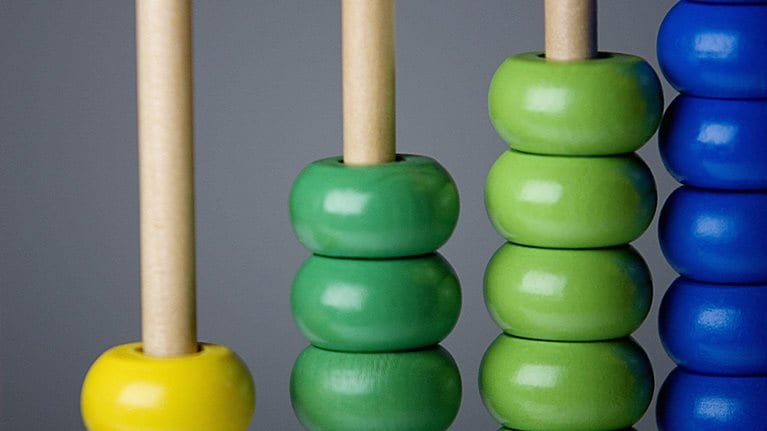A well-educated citizenry is an economic and social necessity. But there is little consensus about what it takes to deliver a quality education.
Stay current on your favorite topics
In two previous reports, one on the world’s best-performing school systems (2007) and the other on the most improved ones (2010), we examined what great school systems look like and how they can sustain significant improvements from any starting point. Here, we switch our focus from systems to student-level performance, by applying advanced analytics and machine learning to the results of the Organisation for Economic Co-operation and Development’s (OECD) Program for International Student Assessment (PISA). Beginning in 2000 and every three years since, the OECD has tested 15-year-olds around the world on math, reading, and science. It also surveys students, principals, teachers, and parents on their social, economic, and attitudinal attributes.
Download the full report, Drivers of Student Performance: Latin America Insights, in English, Spanish, and Portuguese.
Using this rich data set, we have created five regional reports that consider what drives student performance. In Latin America, ten countries participated in the 2015 PISA: Argentina, Brazil, Chile, Colombia, Costa Rica, Dominican Republic, Mexico, Peru, Trinidad and Tobago, and Uruguay. On the whole, Latin America’s PISA scores have improved, but the region still lags behind not only the OECD average but also other countries at a similar economic level.
This research is not intended as a road map to system improvement; that was the theme of our 2010 report, which set out the interventions school systems need to undertake to move from poor to fair to good to great to excellent performance. Instead, this report examines five specific factors that we found to be particularly important to student outcomes: mindsets, teaching practices, information technology, hours of instruction, and early childhood education.
The report’s findings include the following five highlights.
Student mindsets have almost double the effect of socioeconomic background on outcomes.
It is hardly news that students’ attitudes and beliefs—what we term their “mindsets”—influence their academic performance. The magnitude of this effect, and which mindsets matter most, is still under debate; it is here that we focused our research. While there is likely a linkage between socioeconomics and student mindsets, we measured the effect of mindsets that is not explained by socioeconomics alone. By analyzing the PISA data, we found that mindset factors have almost double the predictive power (30 percent) of home environment and demographics (16 percent) on student PISA scores in Latin America (Exhibit 1). This relationship also holds true in all other regions, which reinforces the importance of this finding.

Some mindsets are more important than others (Exhibit 2). For example, we compared “motivation calibration” (being able to identify what motivation looks like in day-to-day life, including “working on tasks until everything is perfect” and “doing more than what is expected”) with “self-identified motivation” (“wanting to be the best” and “wanting to get top grades”). In the 2015 PISA assessment, motivation calibration has more than twice the impact of self-identified ambition. Students who had good motivation calibration scored 14 percent (or 55 PISA points) higher on the science test than poorly calibrated ones, even after controlling for socioeconomic status, location, and type of school. The relationship is particularly strong for students in poorly performing schools, where having a well-calibrated motivation mindset is equivalent to vaulting into a higher socioeconomic status. In these schools, students in the lowest socioeconomic quartile who are well calibrated perform better than those in the highest socioeconomic quartile who are poorly calibrated. In contrast, students with high self-identified motivation score just 6 percent higher than those without.

Other general mindsets that are predictive of student outcomes include having a strong sense of belonging at school and having low test anxiety. We also found that students with a strong “growth mindset” (those who believe they can succeed if they work hard) outperform students with a “fixed mindset” (those who believe that their capabilities are static) by 12 percent. Having a growth mindset was particularly predictive for students in poorly performing schools, for those in lower-income quartiles, and for boys.
Would you like to learn more about our Social Sector Practice?
To be clear, mindsets alone cannot overcome economic and social barriers, and researchers still debate the extent to which school-system-level interventions can shift student mindsets. Our research does, however, suggest that they matter a great deal, particularly for those living in the most challenging circumstances. The research on this subject is both nascent and predominantly US-based. Considering its importance, local experimentation in Latin America and elsewhere should be a priority.
Students who receive a blend of inquiry-based and teacher-directed instruction have the best outcomes.
High-performing and fast-improving school systems require high-quality instruction. It’s that simple. And that difficult. We evaluated two types of science instruction to understand how different teaching styles affect student outcomes. The first type is “teacher-directed learning,” where the teacher explains and demonstrates scientific ideas, considers questions, and leads classroom discussions. The second is “inquiry-based learning,” where students play a more active role, creating their own questions and engaging in experiments. Our research found that student outcomes are highest with a combination of teacher-directed instruction in most or almost all classes, with inquiry-based learning in some classes. If all students experienced this blend, average PISA scores in Latin America would rise 19 PISA points, equivalent to over half a school year of learning.
Given the strong support for inquiry-based pedagogy, this seems counterintuitive. We offer two hypotheses for these results. First, students cannot progress to inquiry-based methods without a strong foundation of knowledge, gained through teacher-directed learning. Second, inquiry-based teaching is inherently more challenging to deliver, and teachers who attempt it without sufficient training and support will struggle. Better teacher training, high-quality lesson plans, and school-based instructional leadership can help. It’s also important to note that some kinds of inquiry-based teaching are better than others. For example, explaining how a science concept can be applied to a real-world situation appears to boost outcomes, whereas having students design their own experiments does the opposite.
While technology can support student learning outside of school, its record inside school is mixed. The best results come when technology is placed in the hands of teachers.
Screens are not the problem when it comes to student outcomes—but neither are they the answer. Our research examined the impact of first exposure to information and communications technologies (ICT) and the impact of ICT for 15-year-olds—at home and during school. Students with their first digital exposure before the age of six score 45 PISA points higher than those exposed at age 13 or later (controlling for socioeconomic status, school type, and location). Students of higher socioeconomic status are more likely to start using devices at an early age, which has worrying implications for the equity gap.
At home, two to four hours of Internet use per day for 15-year-olds is associated with the highest science performance, 46 PISA points higher than for students with no after-school Internet use (again, after controlling for socioeconomic status, school type, and location). Notably, more than half the benefit of after-school use is captured with just 31 to 60 minutes of Internet use a day. There appears to be declining impact (and possibly negative behavioral implications) when students spend four hours or more a day before a screen.
The impact of ICT use on students during the school day is much more mixed: from −40 to +46 PISA points, depending on the type of hardware. Most important, we found that deploying ICT to teachers, rather than students, works best. For example, adding one data projector per classroom leads to a marked increase in students’ PISA science performance, over 30 times as much as adding one student computer to the same classroom. Some student-based classroom technologies, such as tablets and e-book readers, actually appear to hurt Latin American student performance. These results describe the impact of education technology as currently implemented, not its eventual potential. They evaluate only hardware, not software, and do not account for rapid evolution. Even so, Latin American leaders should not assume the impact of ICT will always be positive or even neutral. Systems should ensure that ICT programs are fully integrated with the curriculum and instruction and are supported by teacher professional development and coaching.

How the world’s most improved school systems keep getting better
Increasing the school day—up to seven hours a day—improves outcomes. Significant gains can also be made by using existing time better.
School facilities are stressed in many parts of Latin America, with buildings often hosting two shifts of students daily. One consequence is that many students simply don’t spend that much time in school. Although the regional average is five hours per day, 15 percent are in school 4.5 hours a day or less. A number of countries, including Brazil and Colombia, are therefore seeking to end school sharing and extend the school day.
It makes intuitive sense that spending more time in school should improve performance, and the PISA results bear that assumption out. Across Latin America, PISA science outcomes increase by 3.7 percent (or 14 PISA points) for every 30 minutes of additional daily classroom instruction, up to seven hours per day. If all students performed at the level of those currently receiving 6.5 to seven hours of instruction per day, this would boost average science achievement by about 35 PISA points across the region. But extending the school day is costly, requiring more infrastructure and teachers. Another option to increase hours of instruction is lengthening the school year; however, recent research in Mexico showed diminishing marginal returns to additional days in school at present quality levels. Indeed, Latin American countries are among the least productive of all the countries that take PISA in terms of PISA points per hour in school, partly because only 65 percent of classroom time is actually used for learning in several countries (compared with an OECD benchmark of 85 percent). Ultimately, systems will need to increase both the number of hours in school and the quality of each hour. In the short term, they can make important strides in improving student learning for every existing hour in school by ensuring they are minimizing noninstructional time and by raising teacher quality through coaching and professional development.
Early childhood education had a positive academic impact on today’s 15-year-olds, but low-income students received less benefit than high-income ones.
Many studies have shown that quality early childhood education (ECE) improves social and academic outcomes, although there are some concerns about fade-out in later years. Our findings, like other research, validate the overall positive impact of ECE at age 15 but show that there is a trade-off between increasing access and ensuring quality.
On the whole, students with some ECE perform 8 percent better on the PISA science test a decade later, but there are troubling differences among students from different backgrounds. High-socioeconomic-status children get more than double the benefit of that of lower-economic-status children, and they benefit at every age, with the highest scores when starting at age two. Lower-socioeconomic-status children have the highest scores when starting at age four. This highlights the importance of investing in good-quality ECE, especially for lower-income children.
As we share these five findings, we are mindful of their limits. One cannot find definitive answers from a single source, no matter how broad or well designed. The direction of causality, sample sizes, missing variables, and nonlinear relationships are other issues. There are still many questions that need to be resolved through a thoughtful research agenda and longitudinal experimentation. That said, we believe that these five findings provide important insights into how students succeed—and that Latin American educators should incorporate them into their school-improvement programs to deliver the progress that their students deserve.
Download the full report on which this article is based, Drivers of student performance: Latin America insights (PDF–61.7MB).
Read the full report, Drivers of Student Performance: Latin America Insights, in Spanish and Portuguese.


